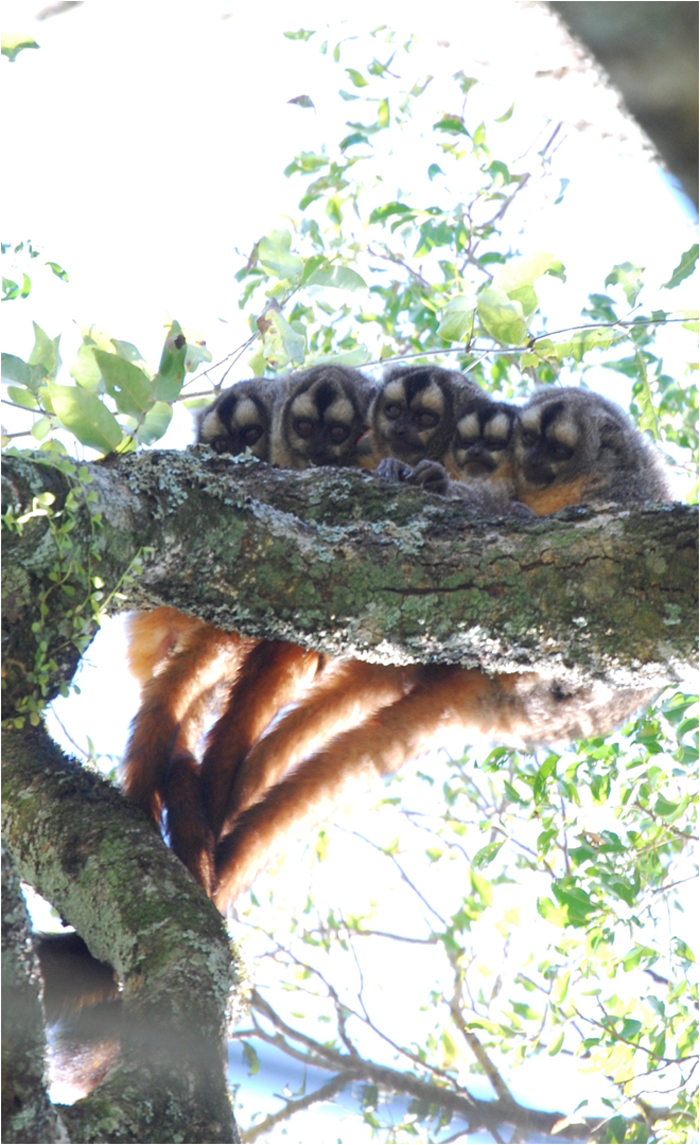Thanks, Dad: Owl Monkeys Are Caring Fathers, Too

This Behind the Scenes article was provided to Live Science in partnership with the National Science Foundation.
If there were a competition for “best father” in the animal kingdom, owl monkeys might very well win.
Why? Because father owl monkeys provide most of the care needed by their young; they carry their young almost all the time, even when chased by predators. By contrast, caregiving from owl monkey mothers to their young is limited almost exclusively to nursing.
Devoted Dads
Considering the high prevalence of “deadbeat dads” and even “cannibal dads ” in the animal kingdom, why — of all creatures — are father owl monkeys so attentive and protective of their young? This question is answered by Patricia C. Wright of Stony Brook University in the accompanying video.
Wright’s insights on owl monkeys are largely based on her many years of researching them in the rainforests of South America . Her research was funded by the National Science Foundation.
A renowned primate researcher and conservationist, Wright is the 2014 winner of the Indianapolis Prize, which is generally regarded as the Nobel Prize of conservation, and the author of High Moon over the Amazon: My Quest to Understand the Monkeys of the Night (Lantern Books: 2013).
Get the world’s most fascinating discoveries delivered straight to your inbox.
Wild for Monogamy
Wright said that are owl monkeys are not only devoted fathers, but are also truly monogamous — another rarity in the wild. An owl monkey is faithful to its mate until its mate dies. The unflagging fidelity of owl monkeys has been verified by DNA fingerprinting, similar to the type of DNA fingerprinting used in the courts to prove human paternity.
By contrast, DNA fingerprinting has revealed that many animal species that were once thought to be truly monogamous are really social monogamous instead—meaning that a male and female form a long-term pair; mate and raise their young together; and spend time together, but may nevertheless occasionally mate with others. Amazingly, owl monkeys are even more loyal to their mates than are those classic icons of love and fidelity—swans, which were recently revealed by DNA fingerprinting to be socially monogamous rather than truly monogamous.
Taking Back the Night
In addition to being good fathers and staunchly faithful mates, owl monkeys have another extraordinary trait: They are nocturnal — even though they were once daytime creatures, as indicated by certain characteristics of their eyes, said Wright. Lacking built-in flashlights, why would any species return to the night?
Wright’s field research suggests several potential reasons why owl monkeys may have joined the night life. For one thing, Wright observed families of owl monkeys snuggle and sleep together in protected tangles of vines or tree holes during the day, and then climb into the forest canopy to find their favorite tree fruits at night.
Wright speculates that owl monkeys, which are relatively small monkeys, hide and sleep during the day in order to avoid huge, day-hunting raptors, such as harpy eagles and hawks, which regularly swoop down from the skies and snatch even large monkeys that dangle and jump through the tall forest canopy during the day. Also, by only searching for tree fruits during the night, owl monkeys avoid competing with larger monkeys that spend their days hunting for the same foods. So by “time sharing” the canopy with larger monkeys in a day/night cycle, owl monkeys increase their potential for collecting food while reducing their risk from predators.
Learn More
NSF article and slide show: Animal Attraction: The Many Forms of Monogamy in the Animal Kingdom
WashingtonPost.com chat with a former NSF program director: From Devoted, to Deadbeat, to Cannibal: How Animal Fathers Survive in the Wild.
Editor's Note: The researchers depicted in Behind the Scenes articles have been supported by the National Science Foundation, the federal agency charged with funding basic research and education across all fields of science and engineering. Any opinions, findings, and conclusions or recommendations expressed in this material are those of the author and do not necessarily reflect the views of the National Science Foundation. See the Behind the Scenes Archive.




